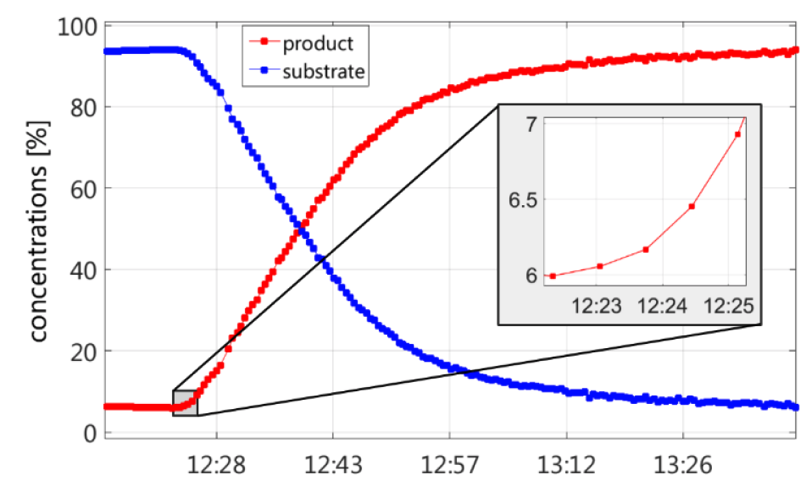Real-time Insights: Inline Raman monitoring of distillation columns
Process Raman spectroscopy was successfully employed for the monitoring of both batch and continuous distillation processes in pilot and production scale. Fibre-coupled immersion probes were mounted inline, i.e. into the condenser/boiler reflux or into the transfer lines towards the downstream processing units. Recorded spectra were immediately subjected to quantitative analysis in order to calculate real-time mixture composition for monitoring and control purposes. An inline method like Raman spectroscopy avoids external sampling which can be detrimental to the analysis e.g. of high-melting liquids or volatiles and supports optimal operation of the plant.
The separation capacity of columns is typically determined in steady-state operation. Isomer mixtures typically employed for the characterisation of columns are well resolved with Raman spectroscopy (e.g. cis-/trans-decalin, left image) and allowed for the detection of concentration changes below the 0.5 % level e.g. in feed or load changes (right image, condenser and boiler).

In batch distillations, finding the optimum point for the fraction change is typically the optimisation target. The short response time of Raman spectroscopy (here ~40 sec) allowed to reliably identify this point so that cross-contamination of the product fractions could be avoided.

Our presentation will discuss the approaches to address the specifics of the two applications and give recommendations for the use of Process Raman spectroscopy to similar processes.